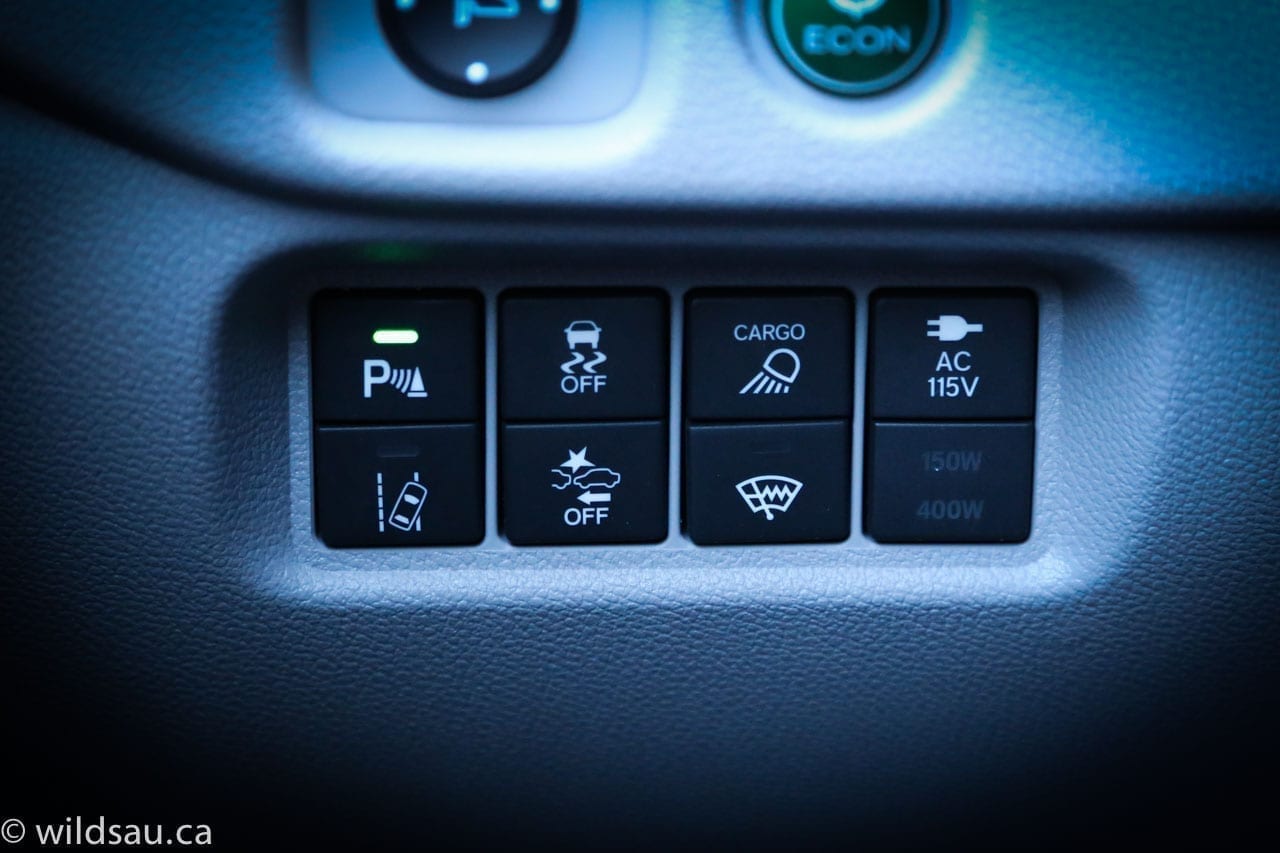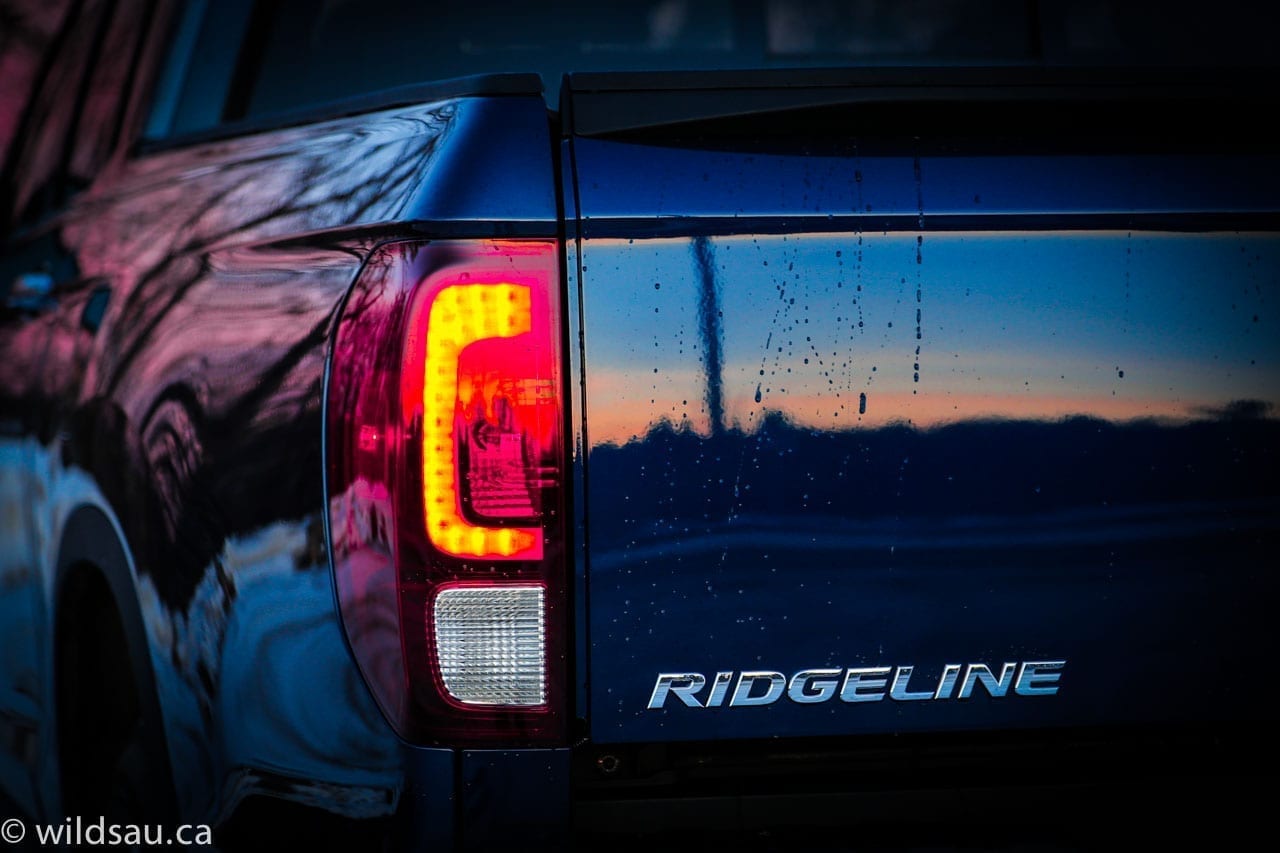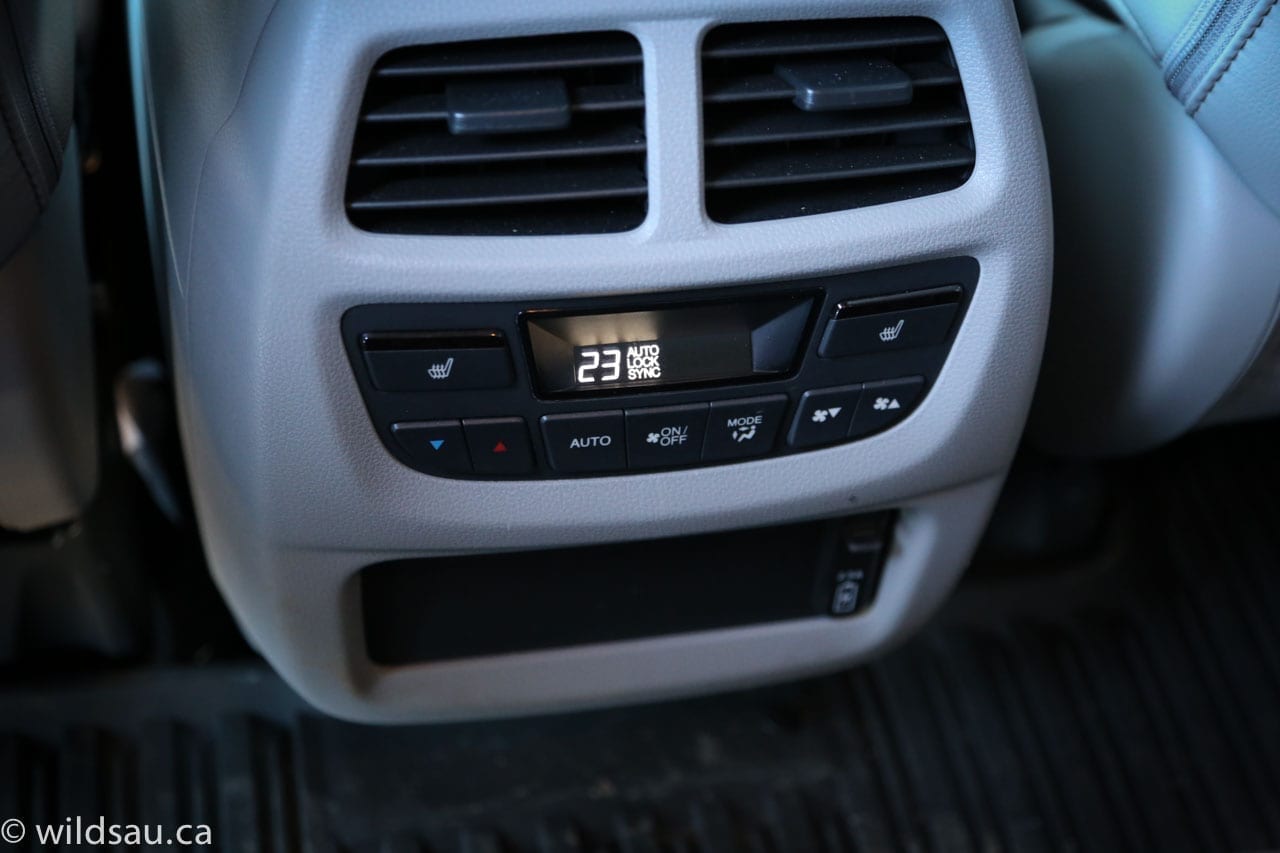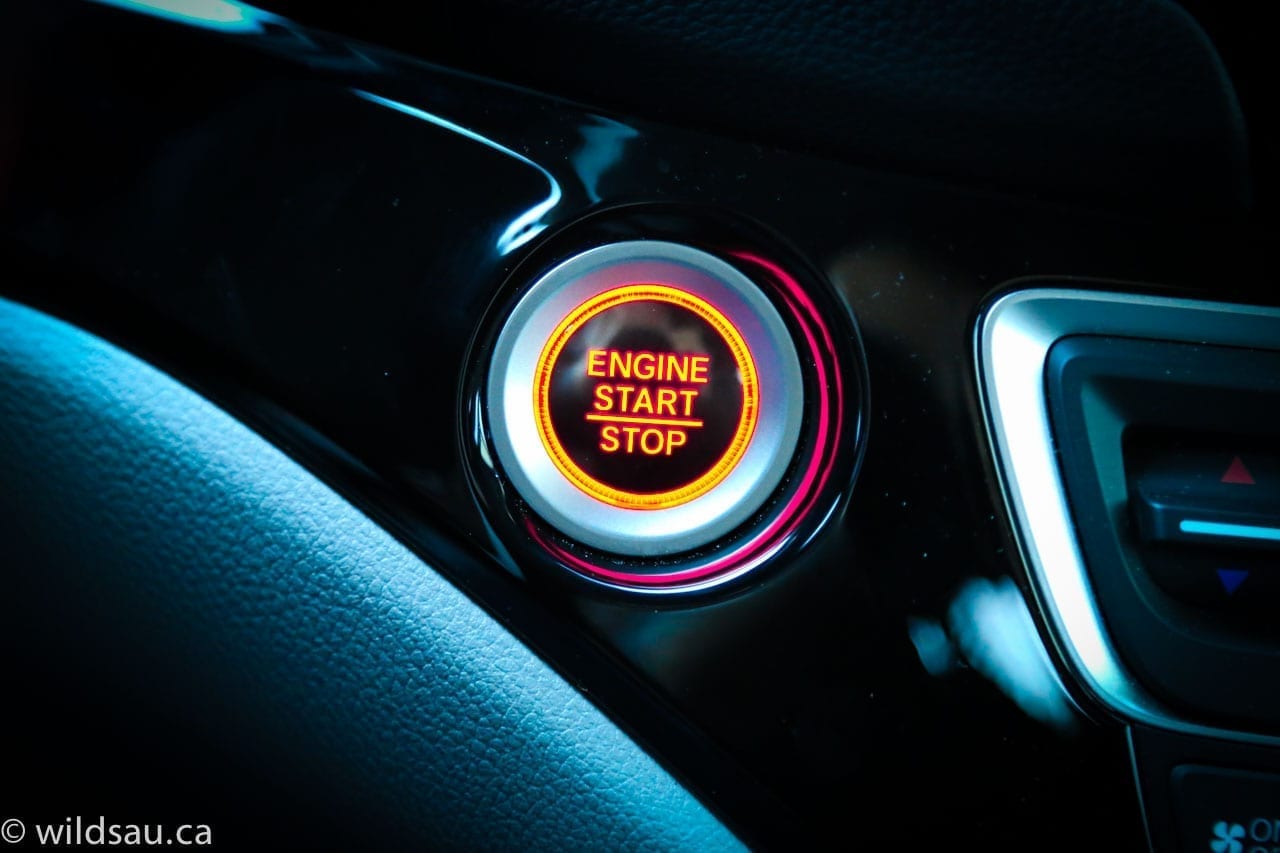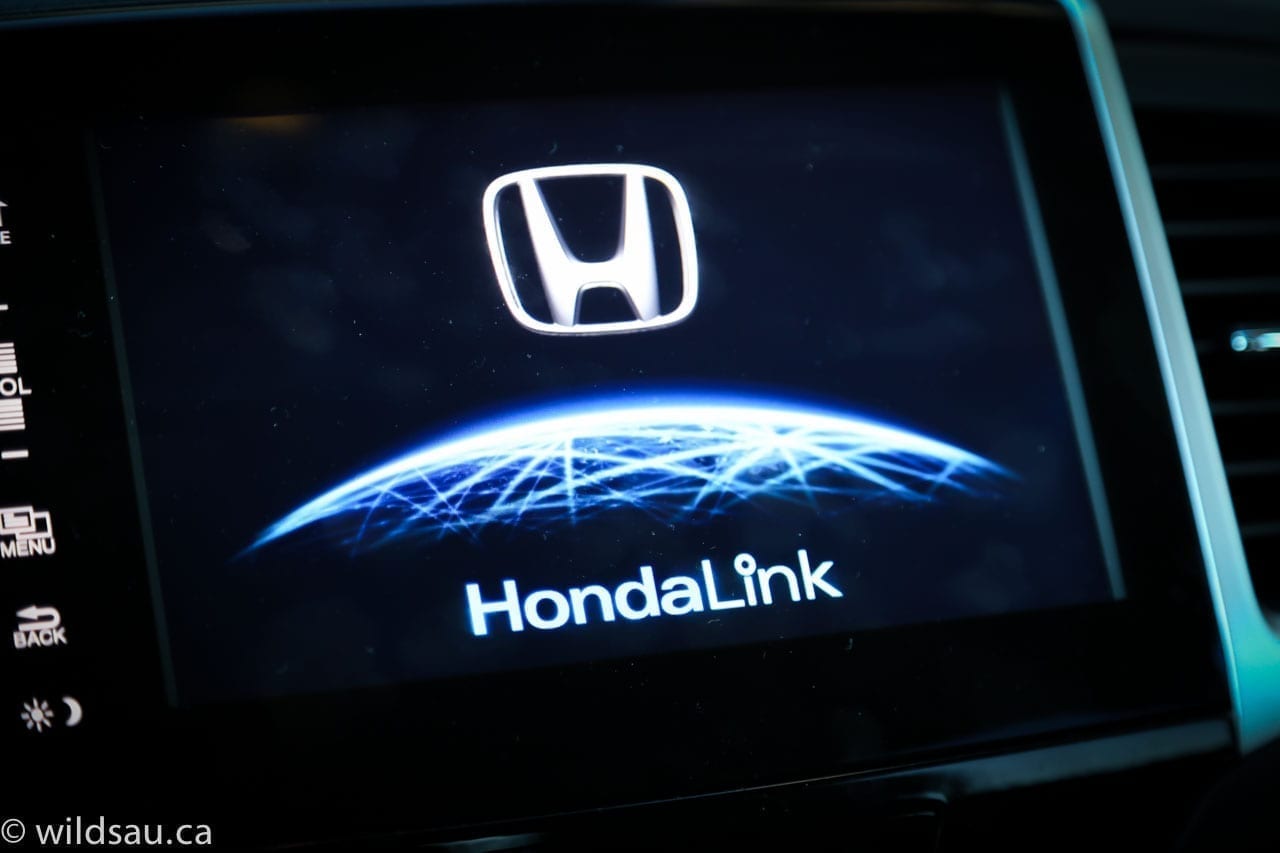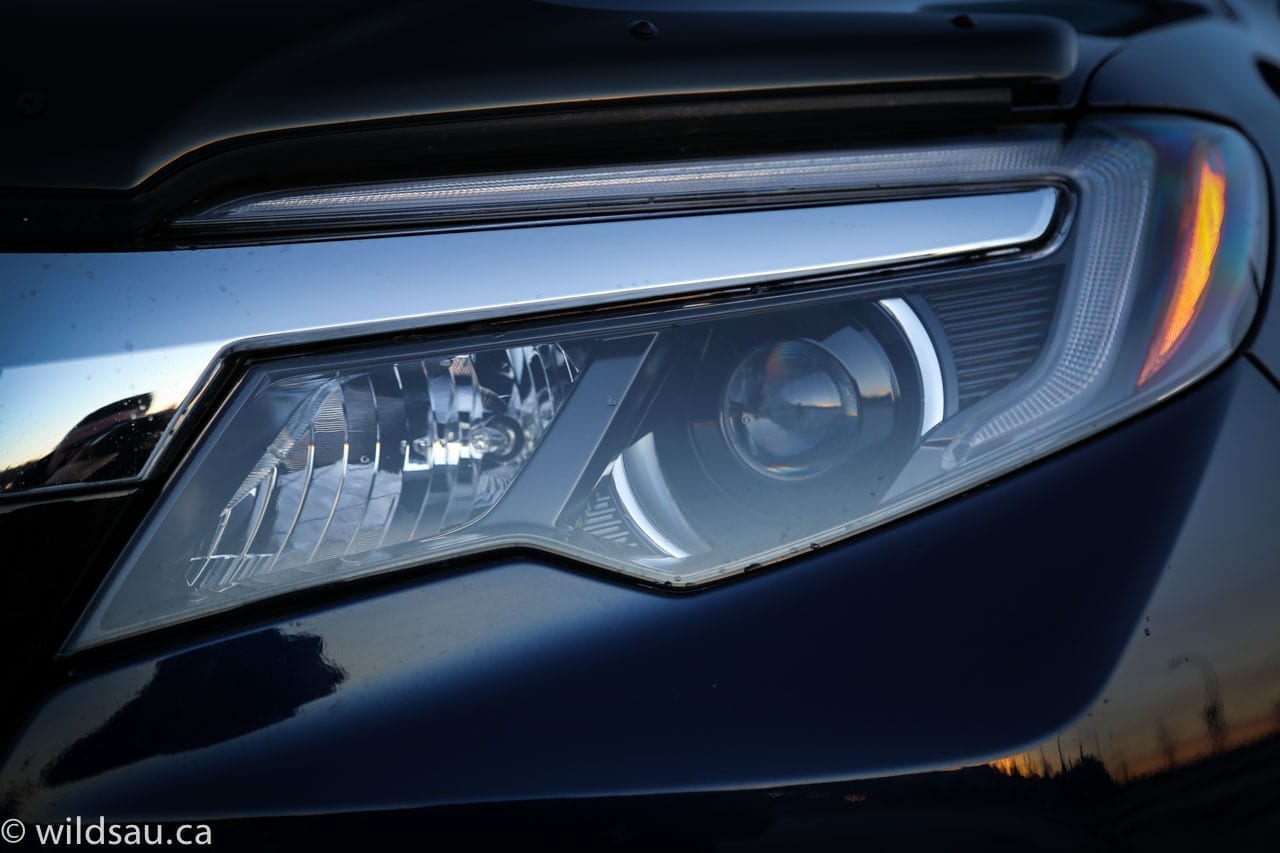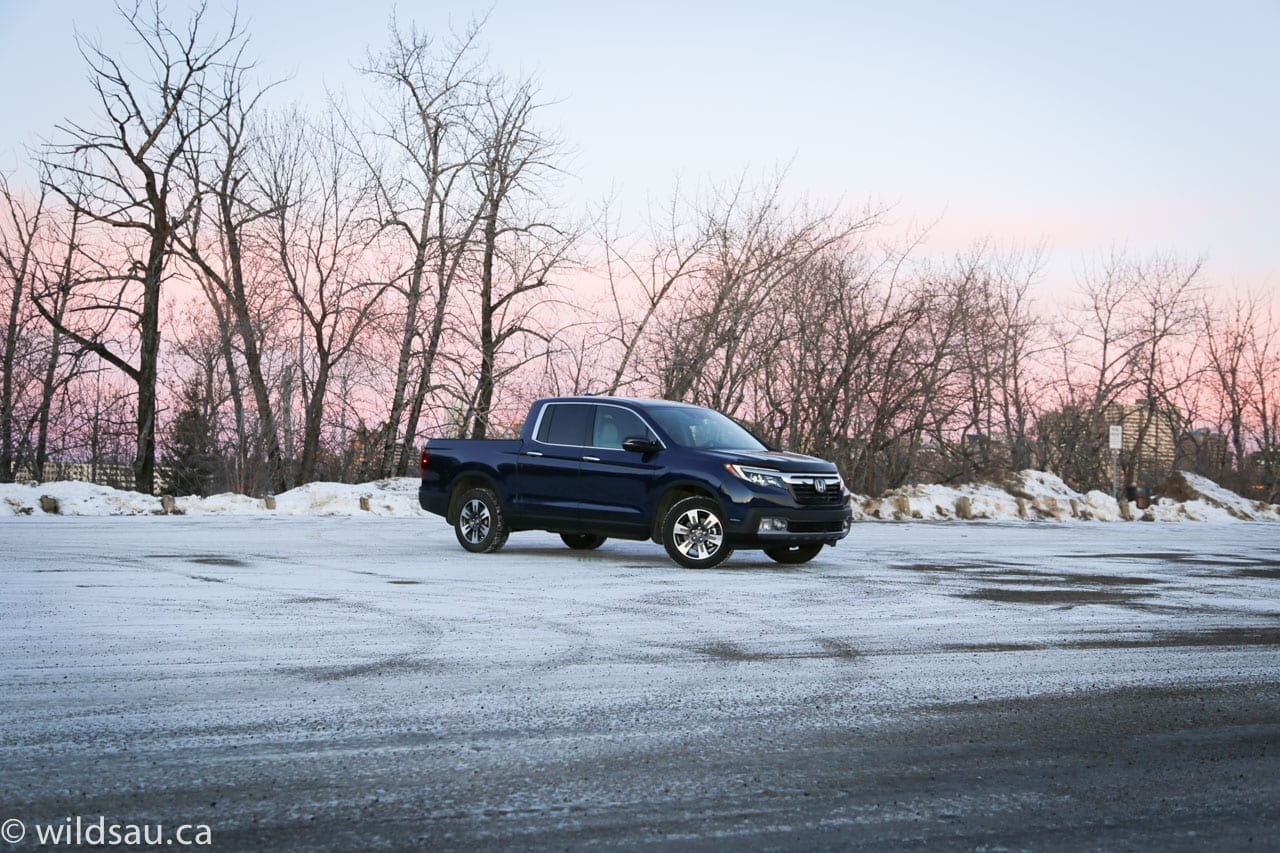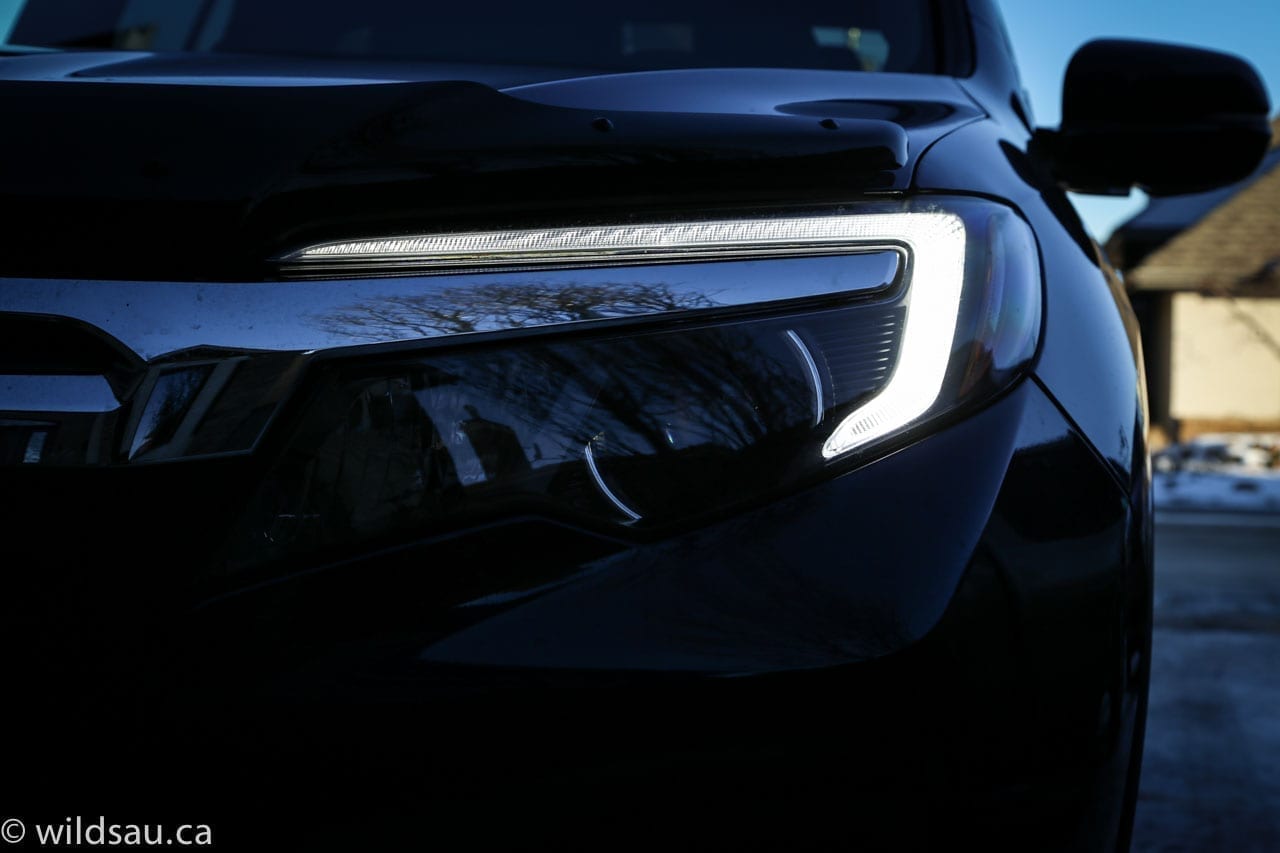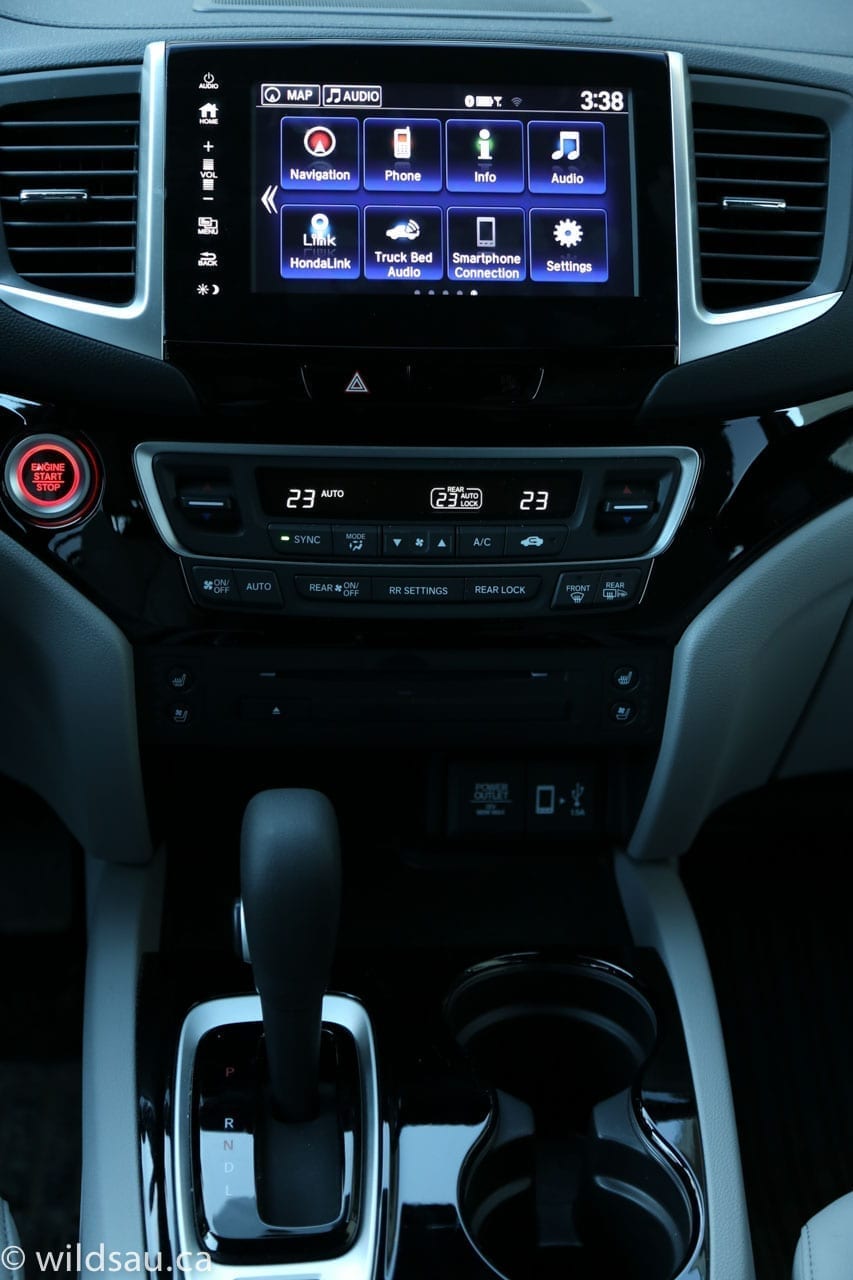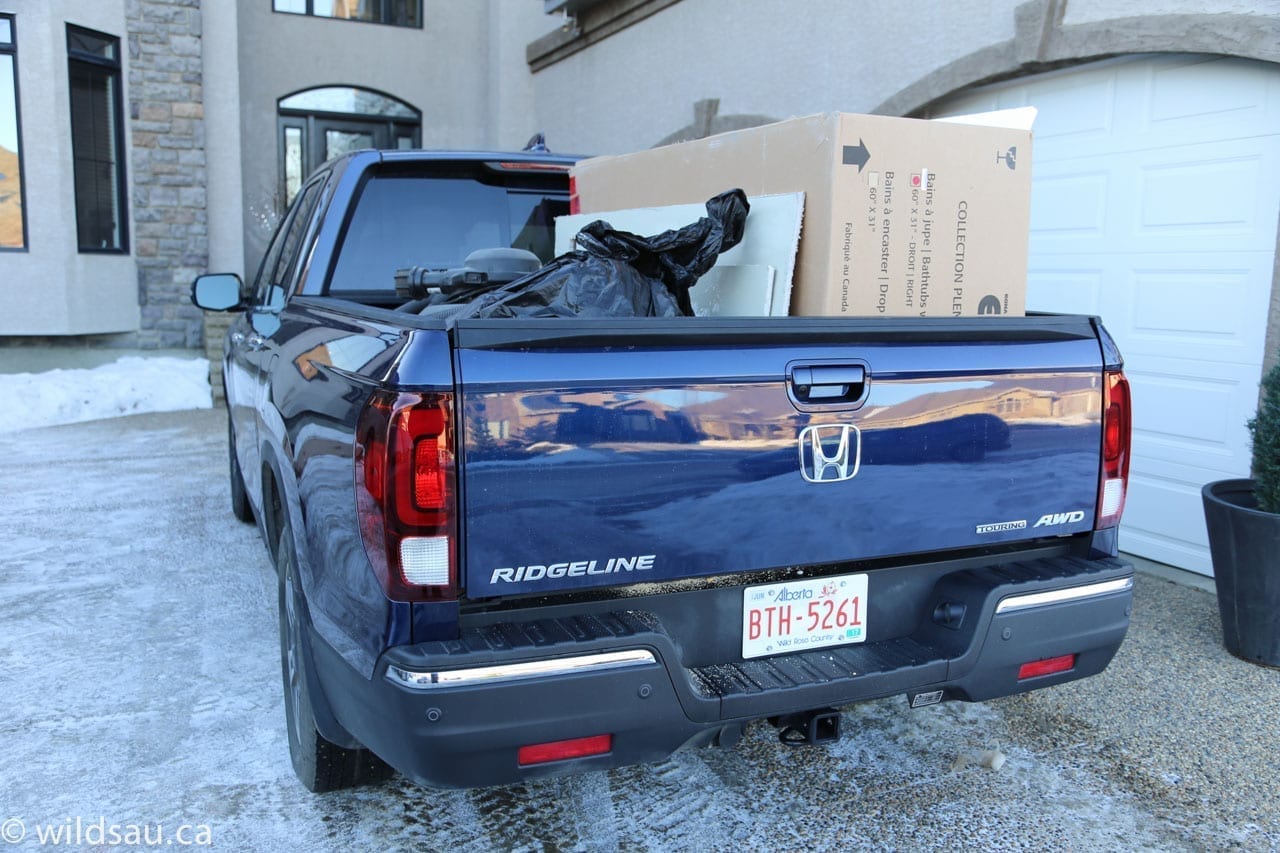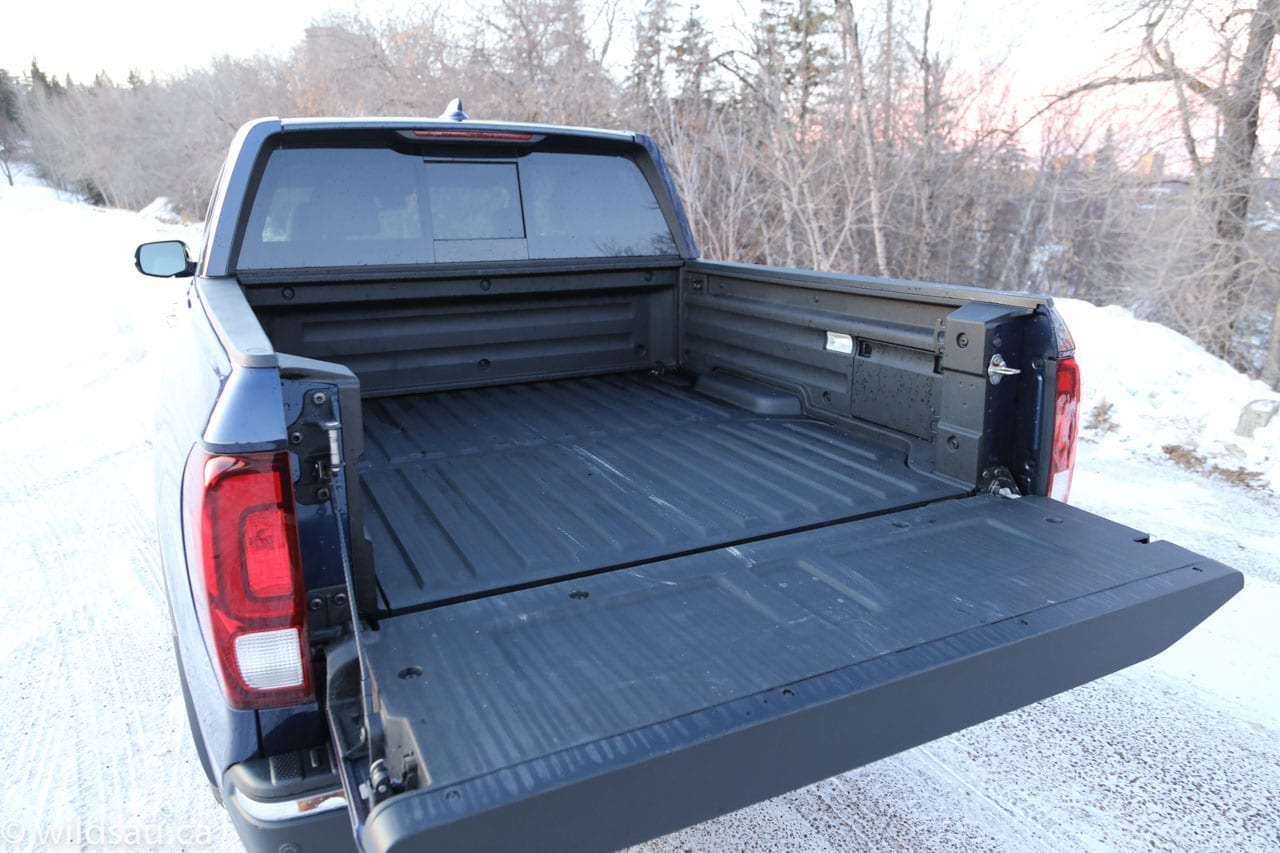The all-new un-truck from Honda is easier on the eyes and gets better in every way.
Review and photos by Tom Sedens
Click on any picture to see a larger version.
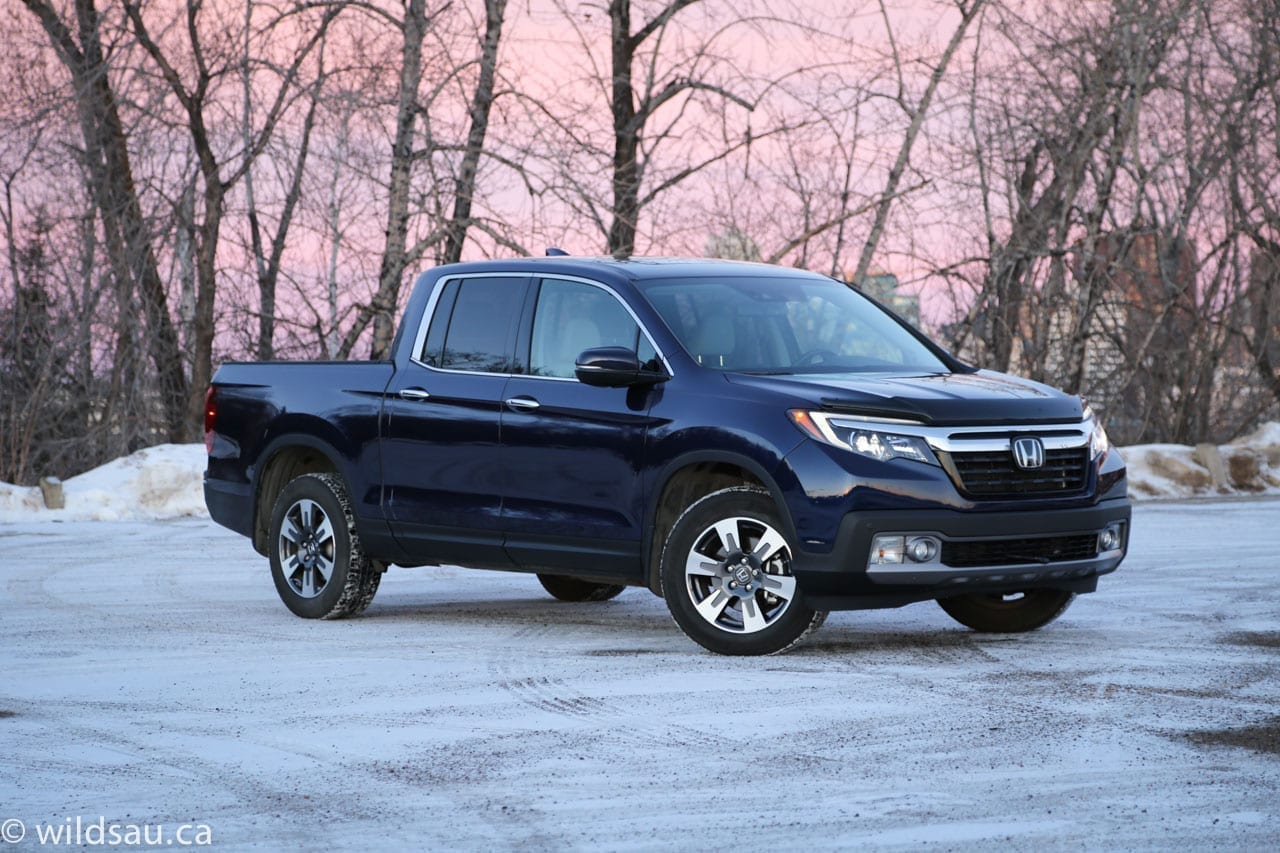
Pricing: 2017 Honda Ridgeline
Base price (Touring trim): $47,090
Options: none
Freight: $1,725
A/C tax: $100
Price as tested: $48,915
Sometimes the timing of a particular press vehicle is just right. In this case, the 2017 Ridgeline arrived just when we were a week into a substantial renovation, and we were able to put its box’s cargo capability to good use. I was happy to see it arrive, and sad to see it go.

When we first met it in 2005, Honda’s Ridgeline represented the most obvious departure from the traditionally-accepted core values in the pick-up truck world. There are those who argue that Toyota’s Tundra and Nissan’s Titan were never quite up there with the three American trucks, and in one way or another, they all fell short. But Honda always chose to do things different, and decided (correctly) that many truck owners don’t really need traditional half-ton pick-ups. They just need some of the utility those trucks offer, but for 95% of the time, are just commuting with these big, inefficient and uncomfortable beasts. And so its Ridgeline was their way of saying “Hey, it’s OK to be one of those who don’t need all the brawn of regular trucks” – and they got a lot of it right. Unfortunately the styling department didn’t do as well in the first go-around.
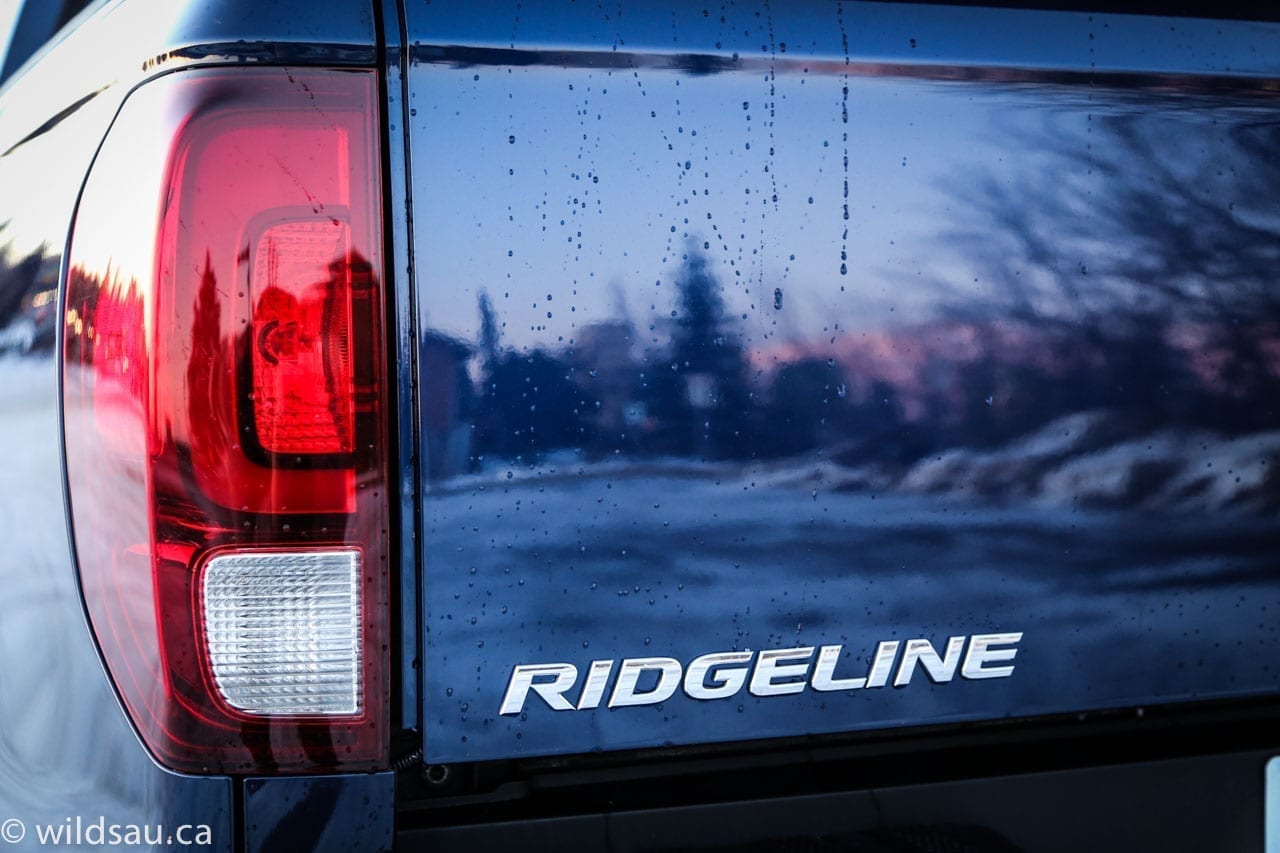
Exterior
The first thing you’ll notice is the vastly improved styling. Since the Ridgeline is mostly a Honda Pilot underneath, you get mostly a Honda Pilot above the surface too. The front end is basically a Honda Pilot that gets lopped off after the second row seats, and they replace the enclosed cargo area with a truck box. It looks much better than the Avalance-esque lines of the previous Ridgeline did. It is much cleaner, and it looks like a truck now.
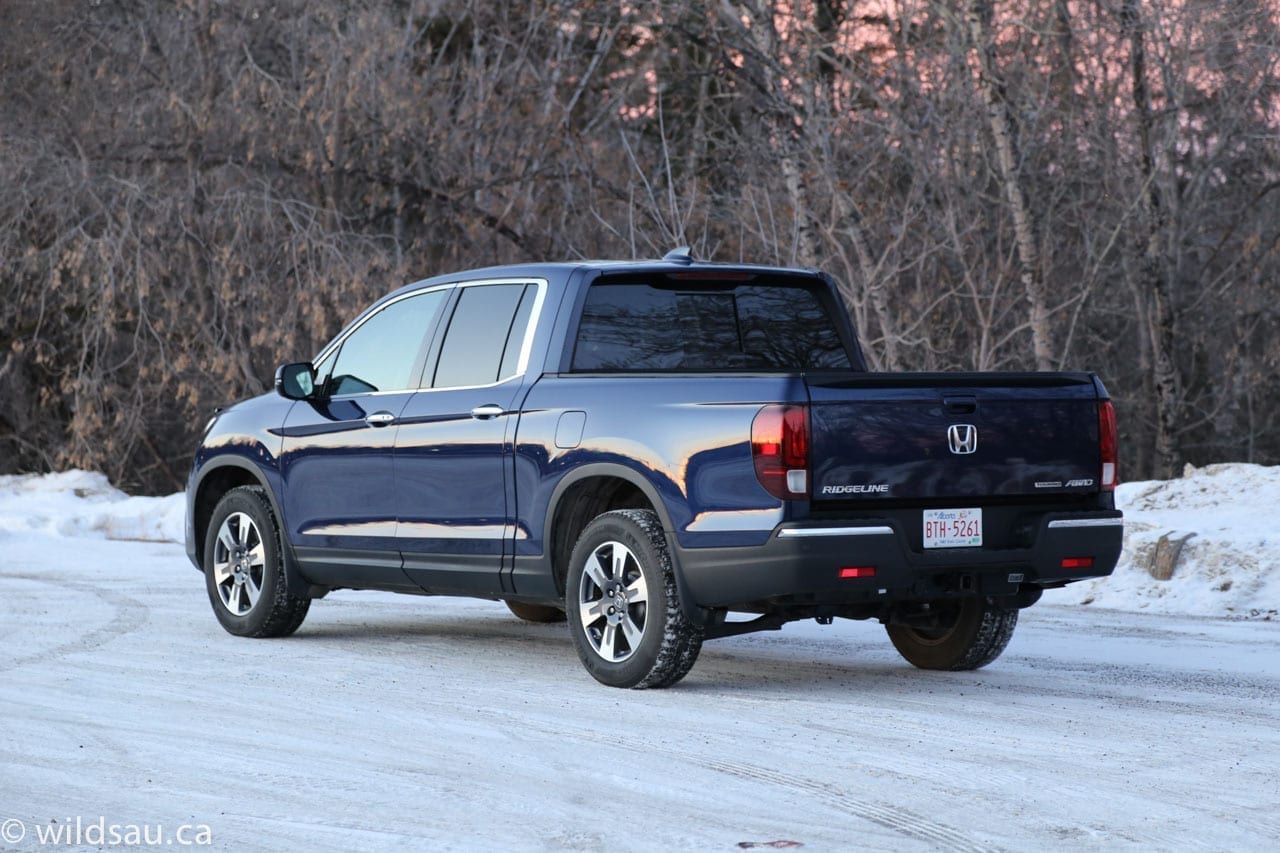
When it comes to lighting, in the words of the esteemed Oprah Winfrey: “You get LEDs, you get LEDs, and you get LEDs.” There are very bright LED headlights, LED driving lights and LED tail lights. The Touring trim gets stylish 18-inch alloy wheels shod with 245/60-sized rubber.
Honda also offers one step up from the Touring trim, which is called the Black Edition. It looks really hot, with blacked out rims and some very cool interior aesthetics.

Interior/Tech/Convenience
Once you step inside, you’ll find a close replica of the Pilot. Honda’s materials are quite nice, ranging from handsomely textured hard plastics to stitched materials on the dash, and very pretty gloss black trim panels. A heads up – the gloss black, as you may expect, quickly collects dust and enough fingerprints to make any CSI fan happy. At night, the blue ambient lighting looks classy and works well.
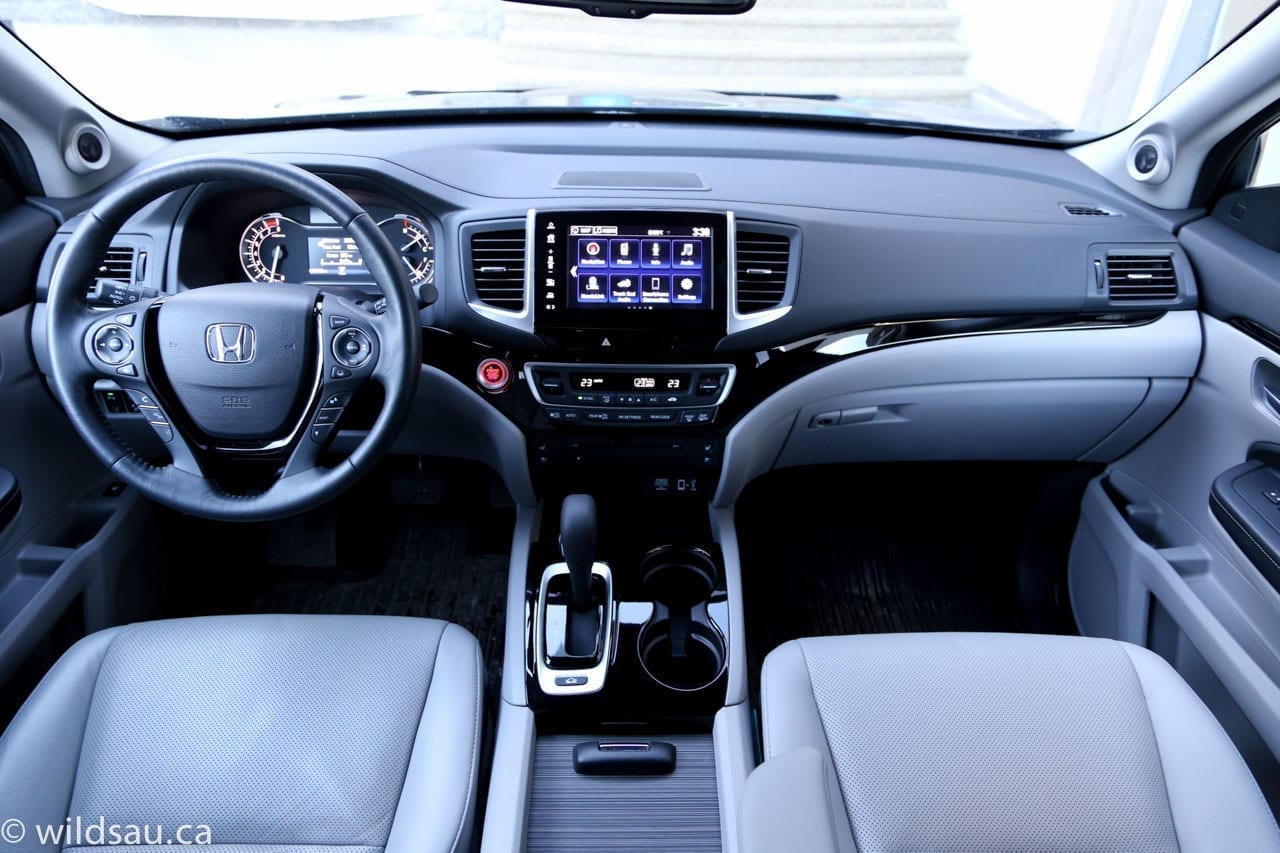
The heated and ventilated perforated-leather seats are very comfortable and we have always appreciated Honda’s adjustable armrests, particularly for long road trips. I loved the comfortable and sporty-feeling leather-wrapped steering wheel – in this trim, it’s heated too.
Front and centre is Honda’s Display Audio System (with navigation in the Touring trim here). It’s not the most intuitive system out there, but the learning curve isn’t too steep. I do like that the touchscreen continues to get more responsive with each generation, and I appreciated the exemplary performance from the 8-speaker 540-watt sound system. There’s a tri-zone automatic climate control system too, which allows you to control the rear temperature or let the passengers there do it themselves with their own control panel. I like the simple push-button start, and with the remote starter, it was always nice to get into a warm truck on cold winter mornings.
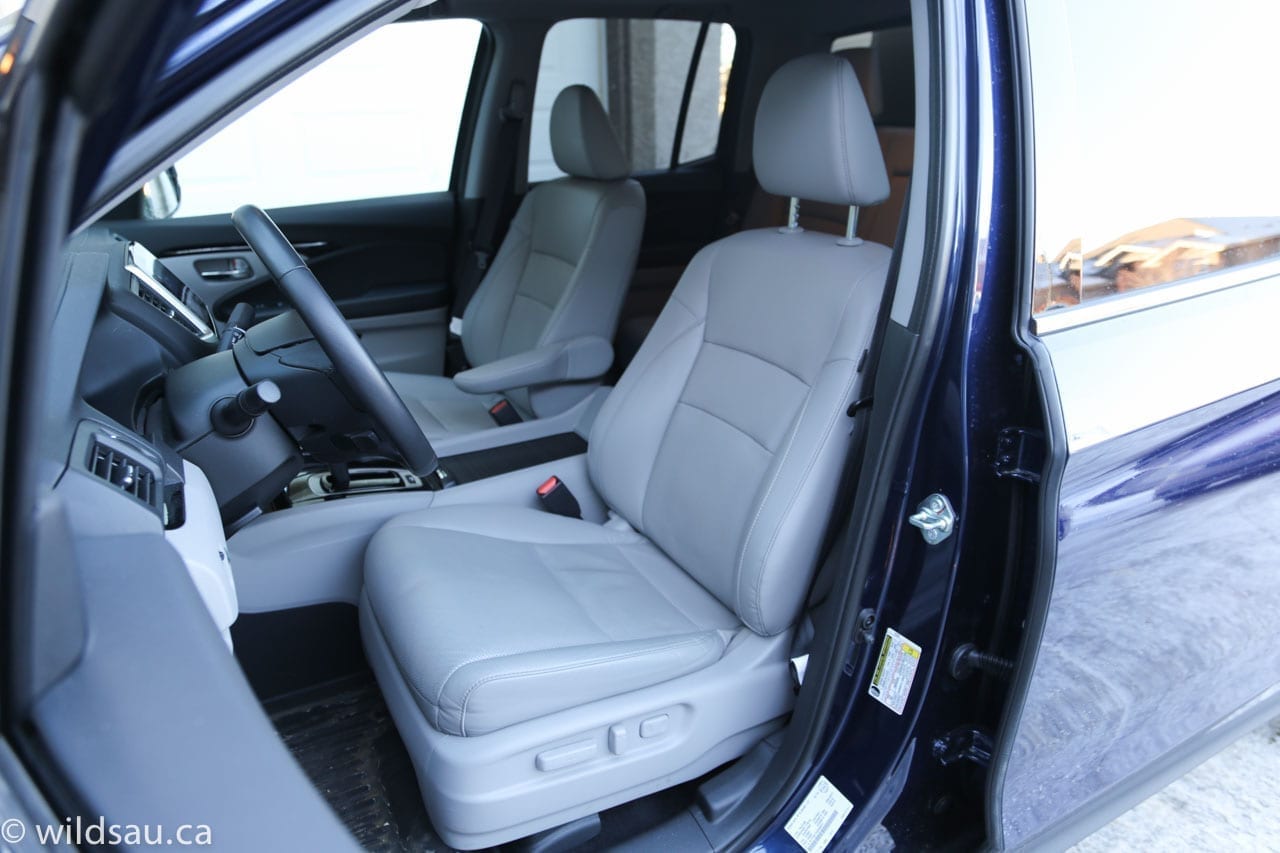
If you’re a fan of fresh air, you’ll find a standard-sized sunroof overhead and as in all trucks, a power-sliding rear centre window. The Ridgeline’s suite of driver assistance technology is substantial. Front and rear parking sensors augment the back-up camera’s views, blind-spot monitoring, rear cross-traffic alert, collision mitigation braking, forward collision warning, lane departure warning, lane keep assist and road departure mitigation systems and a very nice adaptive cruise control system. I do find it unfortunate that you need to step up to the top trim to get some of these items though.
Rear Seats
There are three rear seats, each with a seatbelt and a headrest. I found the leg room to be only adequate, and certainly falling short of the space offered in some of the half-ton cabs out there. I’m 5’10” and I had just enough space. My three kids however were very happy in the back, and there is ample head room even for adults. The two outboard seats are heated and we found them to be quite comfortable.
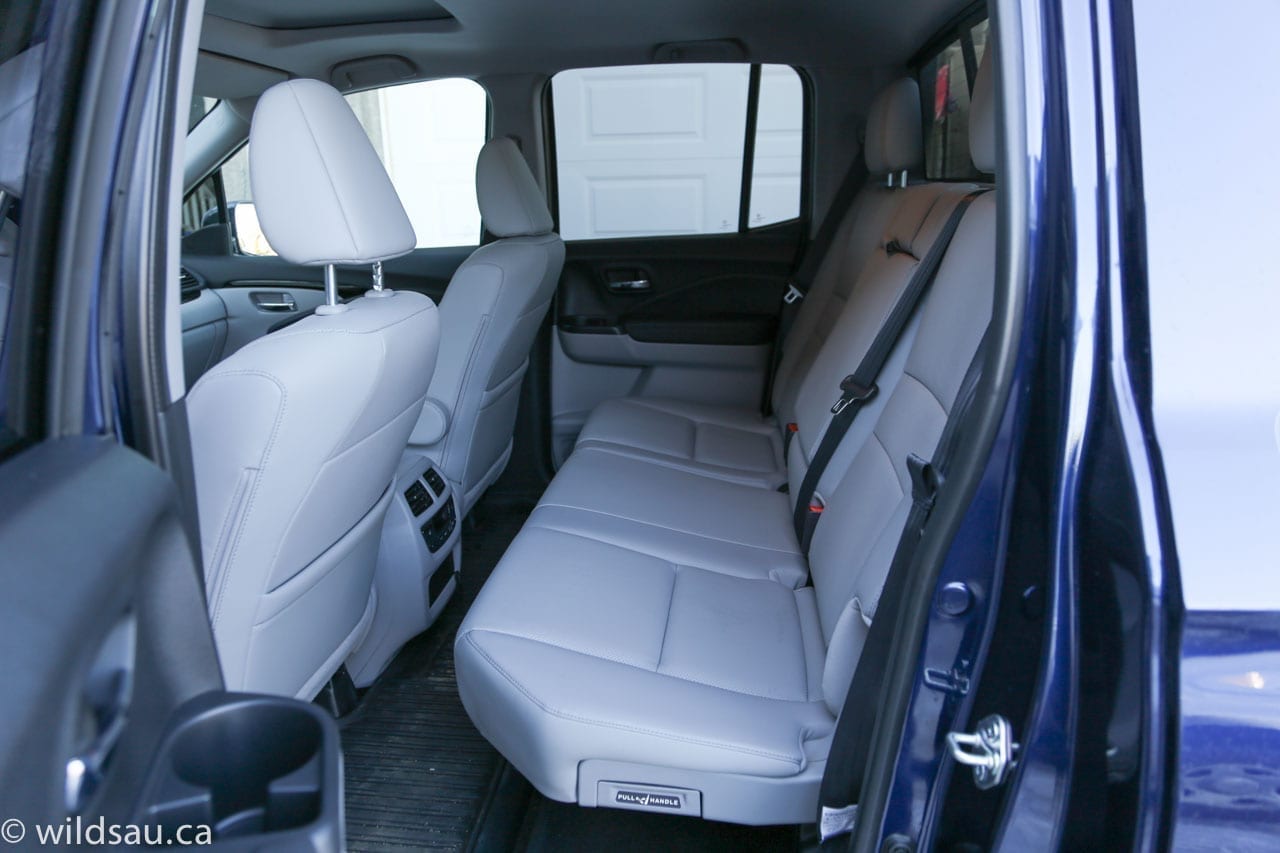
There are two sets of LATCH anchors if you are securing child seats, and the middle seatback folds down to become an armrest with a couple of cupholders. As mentioned earlier, rear passengers have their own climate control panel – which you can lock out and control from the front too, if you have kids like mine that have three different opinions on what the temperature should be and spend each trip fighting about who will be controlling said temperature.
Storage
Honda does a nice job in terms of giving you places to put your stuff. There are dual-level door bins and a typical glove compartment, and a large rubberized drop-in bin at the front of the centre console, along with 12V and USB charging plugs. Under the scrolling armrest lid is another large bin, complete with a sliding organizer and another set of charging plugs.
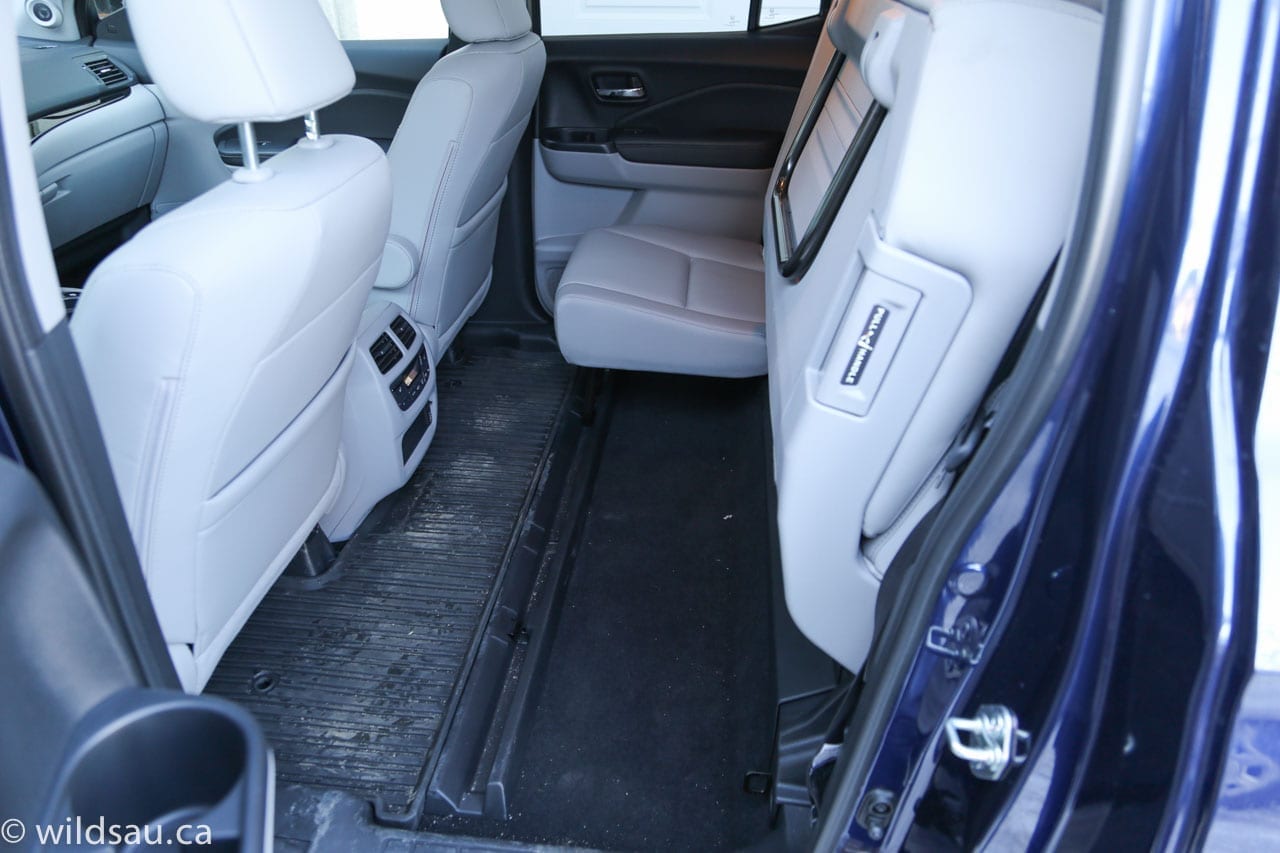
The rear seats split 60/40. Of course they don’t fold down, but rather the seat cushions flip up and out of the way. When they’re flipped up, they leave a wealth of useful interior cargo space, allowing for the transport of a lot of stuff, or some very big items.
Under the Hood
There are no surprises under the hood. Honda’s 3.5-litre V6, putting out 280 HP at 6000 RPM and 262 lb.ft of torque at 4700 RPM here, is paired with a 6-speed automatic transmission. That might not sound competitive for a modern truck, but it is – thanks to the Ridgeline’s low 2054 kg (4528 pounds) curb weight. Honda rates this combination at 12.8 L/100 km (18 US mpg) around town and 9.5 L/100 km (25 US mpg) on the highway. We averaged 12.8 L/100 km (18 US mpg) during a cold winter week with quite a bit of freeway cruising and a number of heavy, loaded up trips to the Eco Station.
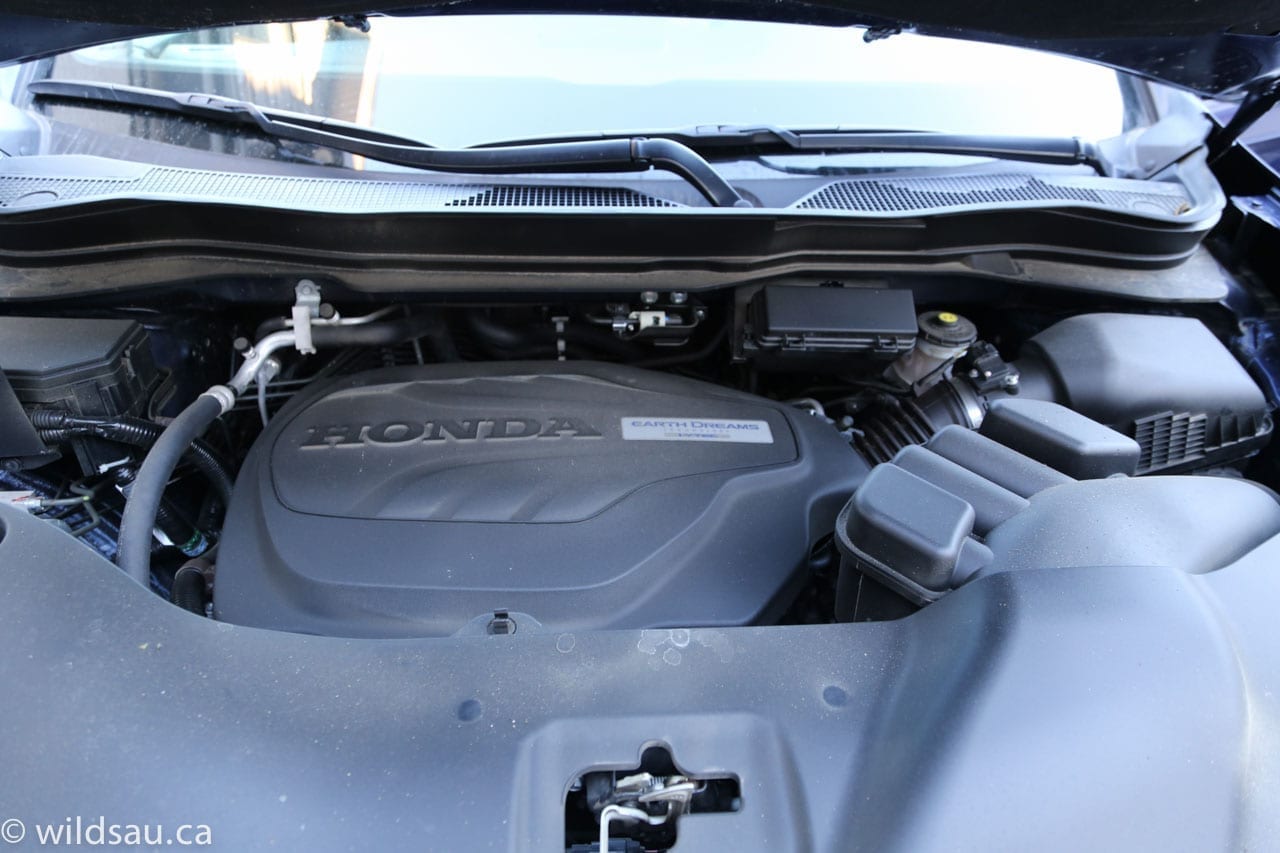
The Drive
The powertrain isn’t just adequate – it’s downright quick off the line and never felt underpowered. It’s also smooth around town and very quiet.
The transmission matches the engine in its smooth character and it seemed quite intelligent, always feeling like it was in the right gear. There is no Sport mode. Instead, you get a Low mode which keeps things in the lower three gears, which does well for towing and hauling. There’s also a D4 button, which maxes out your transmission’s upshifts at fourth gear. To be honest, I’d forego both of those options for some sort of manual shifting ability, which I would prefer in a truck for those occasions where I want to choose the exact gear I want to be in. Anyway, I’m glad Honda went with the 6-speed here which is tried and proven, rather than its 9-speed which, in my opinion, needs a little more work in terms of its programming.
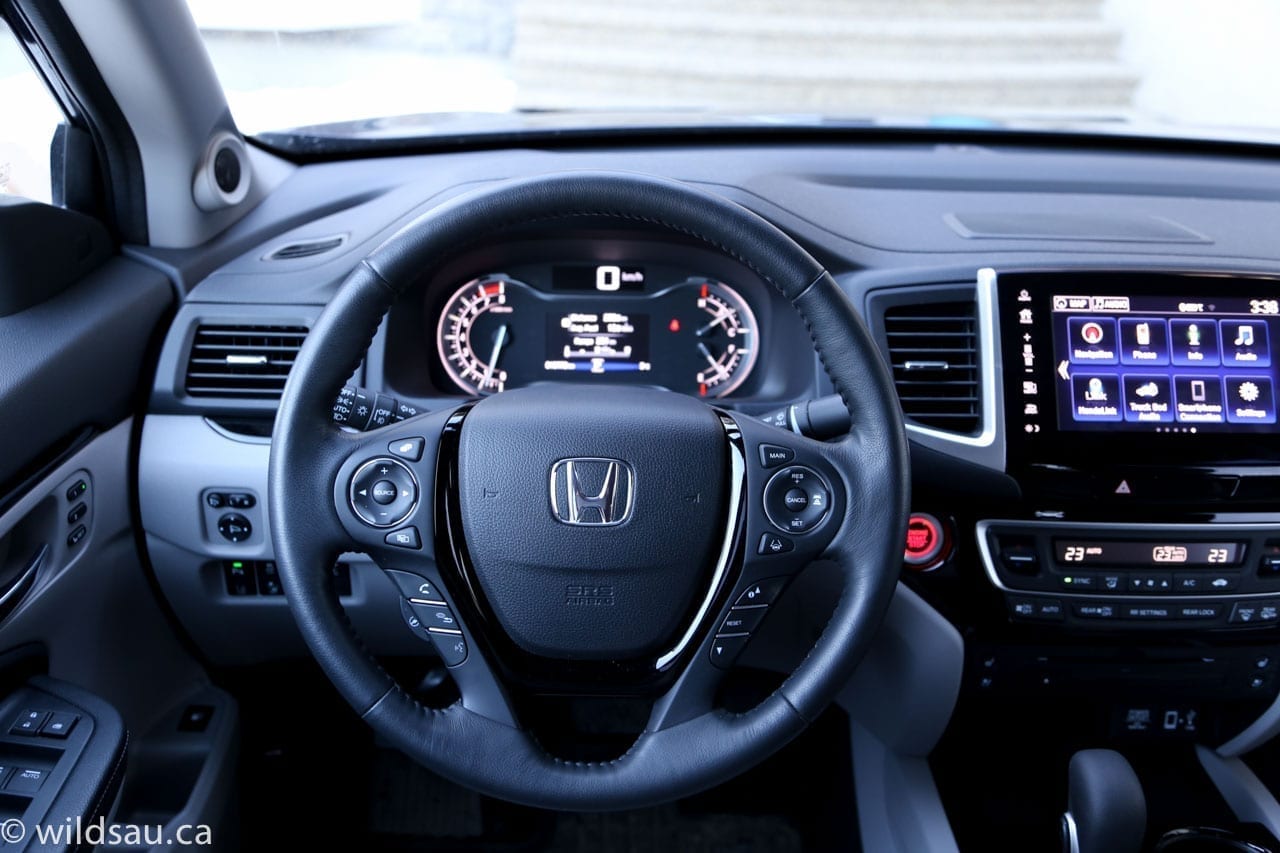
The unibody Ridgeline’s car-like ride is very good, soaking up any hits big or small and you’ll never get the typical jitterbug moves that we’ve come to expect from and accept in normal body-on-frame trucks since before the hills were dusty. Not only is the Ridgeline more comfortable than virtually any other truck, it handles magnificently when compared to the competition. It happily carves sweeping curves, and won’t complain when you aggressively throw it into a corner.
The all-wheel drive did a great job, and nearly always kept itself invisible. Of course, this truck doesn’t employ a true 4×4 system. It’s actually a front-wheel-drive-based vehicle that gets a variable torque management system, along with a driver-switchable intelligent traction management system that has programs for snow, mud and sand. And for many of us, that’s all we need.
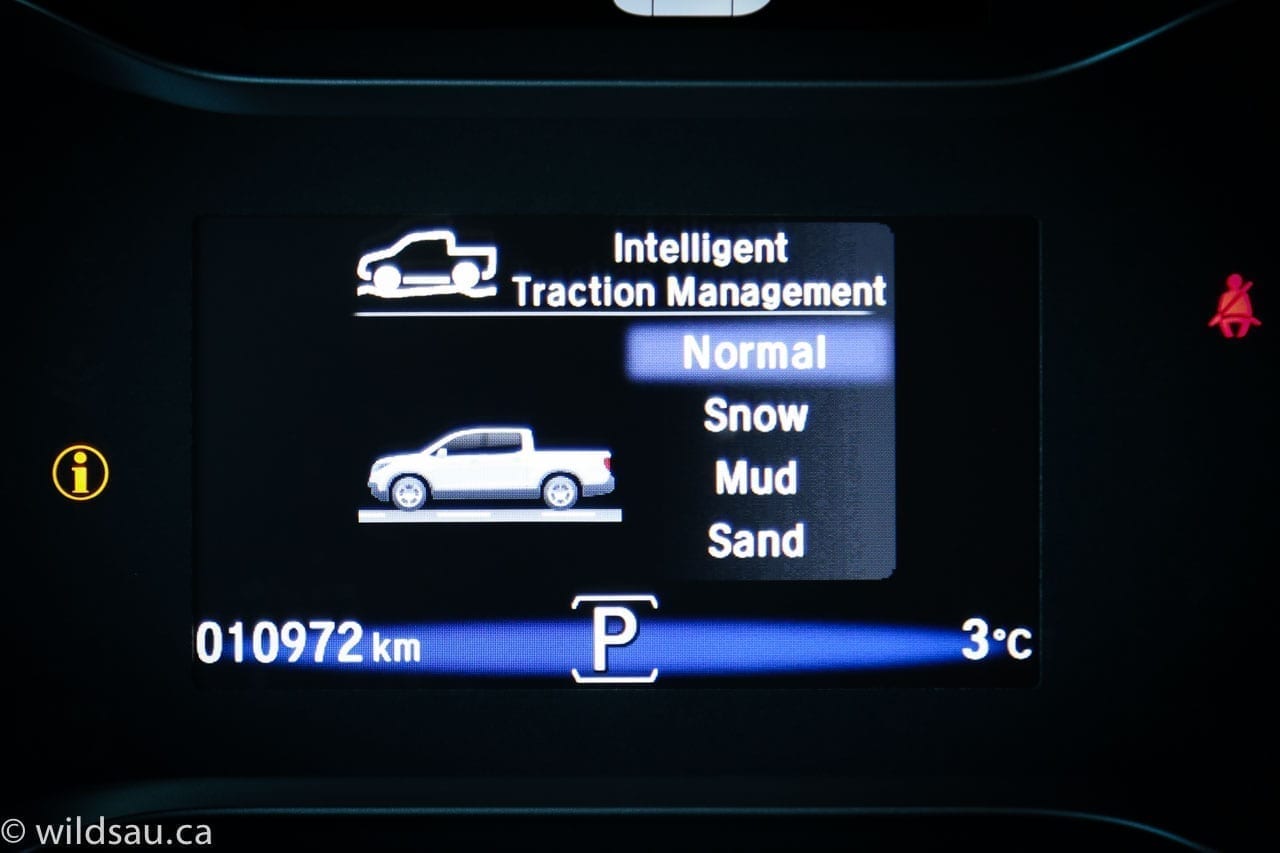
Parking this truck is less stressful than parking other truck – sure, it still has a big turning circle but much smaller than a traditional truck’s and once you’re in your spot, the folding power mirrors help make things more manageable. Honda has done a great job managing the noise levels in the Ridgeline, and it remains quiet even at highway speeds. It also feels wonderfully stable and secure at high speeds and would make an excellent road trip vehicle.
Working
While the Ridgeline represents all the truck that many of us need, the work specs still matter. Yes, it falls short (far short in some cases) of the traditional pick-up truck when it comes to numbers. Many of us may not need any more than the Ridgeline offers though and we might only need these capabilities occasionally. But if the Ridgeline doesn’t cut the mustard on those few days, it’s not worth its salt, is it? So let’s have a look at how the Ridgeline fares as a working truck on paper and in real life. If you’re towing, it’s rated at a respectable 2,268 kg (5000 lb) towing capacity and has a 2730 kg (6019 lb) GVWR. While that isn’t going to set the world on fire, the Ridgeline does take its towing capability seriously with a heavy-duty tranny cooler, a heavy-duty dual-fan radiator, pre-wiring for trailer brake control and electronic trailer stability control. While I did not get to tow with the Ridgeline, I spoke to two owners that regularly do. Both told me their Ridgelines are supremely stable as towing vehicles and they experience no sway whatsoever, even at highway speeds with notable cross-wind.
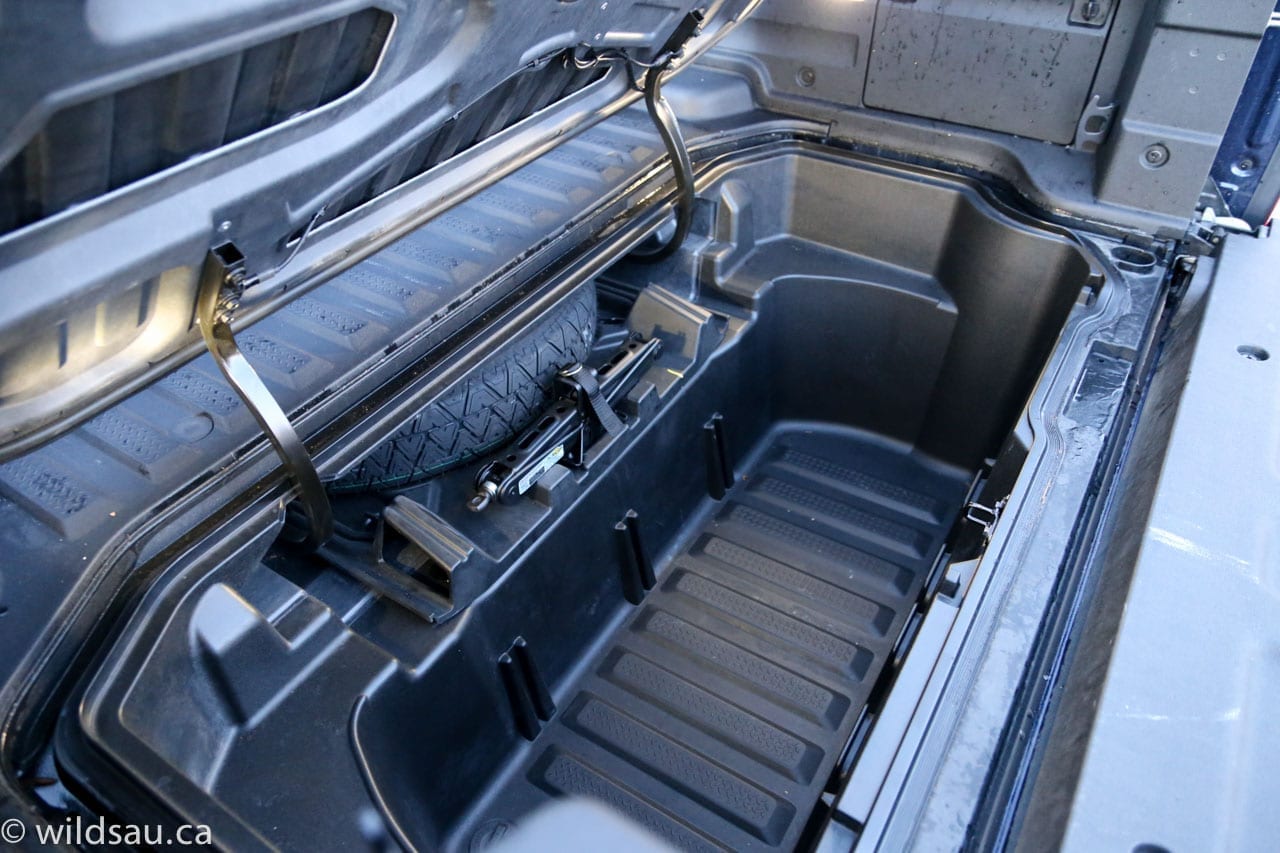
A truck’s biggest weapon is often its box. The Ridgeline’s dual-action tail gate allows you to drop it down as any other truck would, or you can open it sideways for easier access. This came in very handy when we were loading heavy garbage from our renovation into the box, and could step right up to the bumper. I consider this an outstanding feature.
Speaking of the bed, the bed length is 1.625m (5.3′) and you get 1.27m (4.2′) between the wheel wells, allowing you to fit 4′ sheets of anything in there comfortably (width-wise). The 674 kg (1486 lb) payload isn’t mind-blowing, but probably more than enough for the average bear. We liked how Honda ensured the bed was as useful as possible. The totally awesome In-Bed Trunk (with a 207L capacity) is easily accessible, lockable, water-proof (and well-lit when you open it up). That means you can keep important things secure and dry in there, or y0u can put wet and muddy things in there, and thanks to the drain, you can hose it out afterwards. I also loved that it contains the spare tire and jack, keeping them protected from the elements and ready to go should you need them.
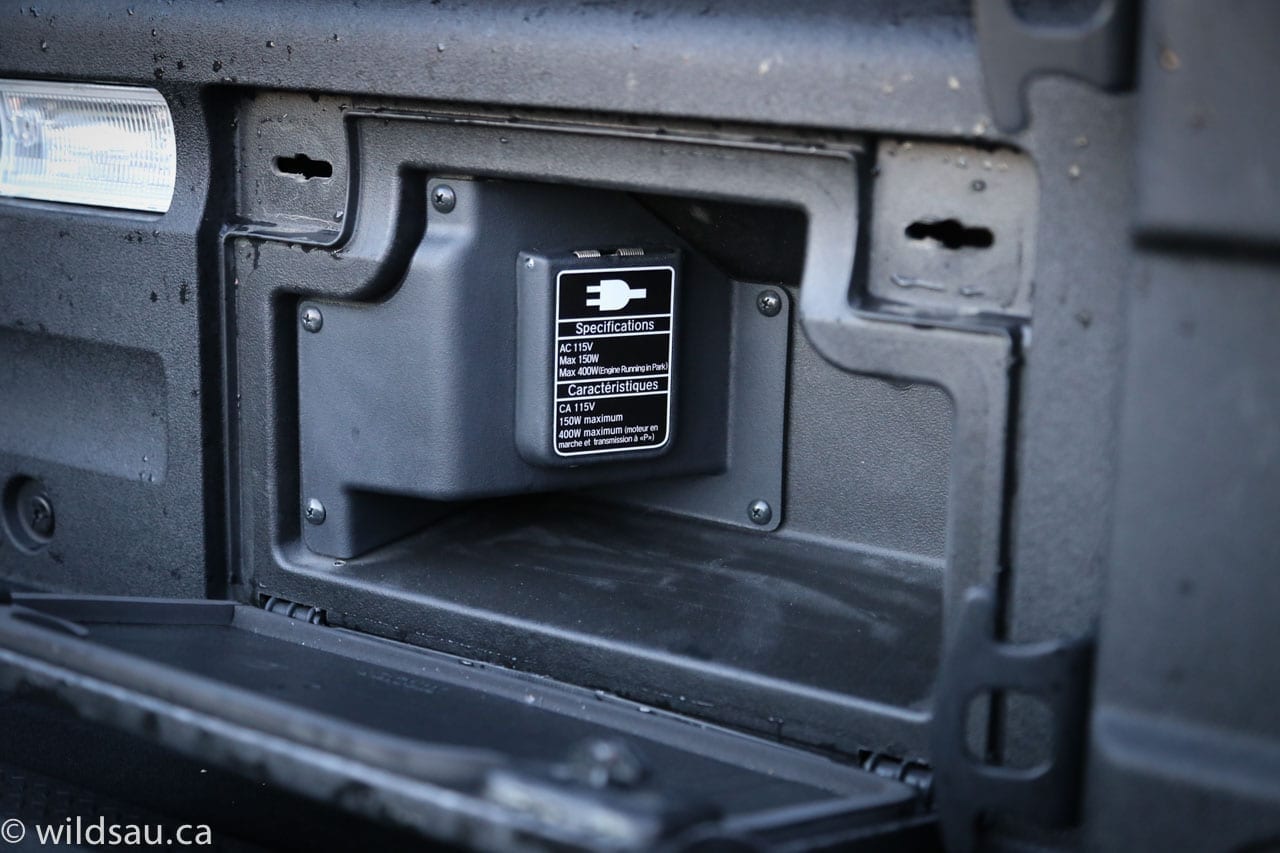
You can see your work or your cargo thanks to the bright LED bed lights (switchable from the cab), and there’s a 150/400-watt in-bed power outlet (also switchable from the cab) that’s protected by a lidded access lid which keeps the plug clean and dry when you’re driving around. When it came to securing our cargo, including big floppy cartons and drywall scraps, we found some very heavy-duty tie-down cleats (and plenty of them) around the perimeter of the box.
And finally, when it’s time to party – the Touring trim gets the gimmicky-sounding but surprisingly-good Truck Bed audio system. This lets you pipe your tunes from the interior sound system through the truck’s box, using a combination of “exciter” drivers that use the truck box to amplify the sound. It actually sounds better and plays louder than I thought it would, and makes for a great work-site radio or tail-gate party system. Lest you be tempted to become a red-neck and roll around town with the boys in the back, tunes cranked and air guitars held high, Honda ensures that the system turns off as soon as you pass 15 km/h.
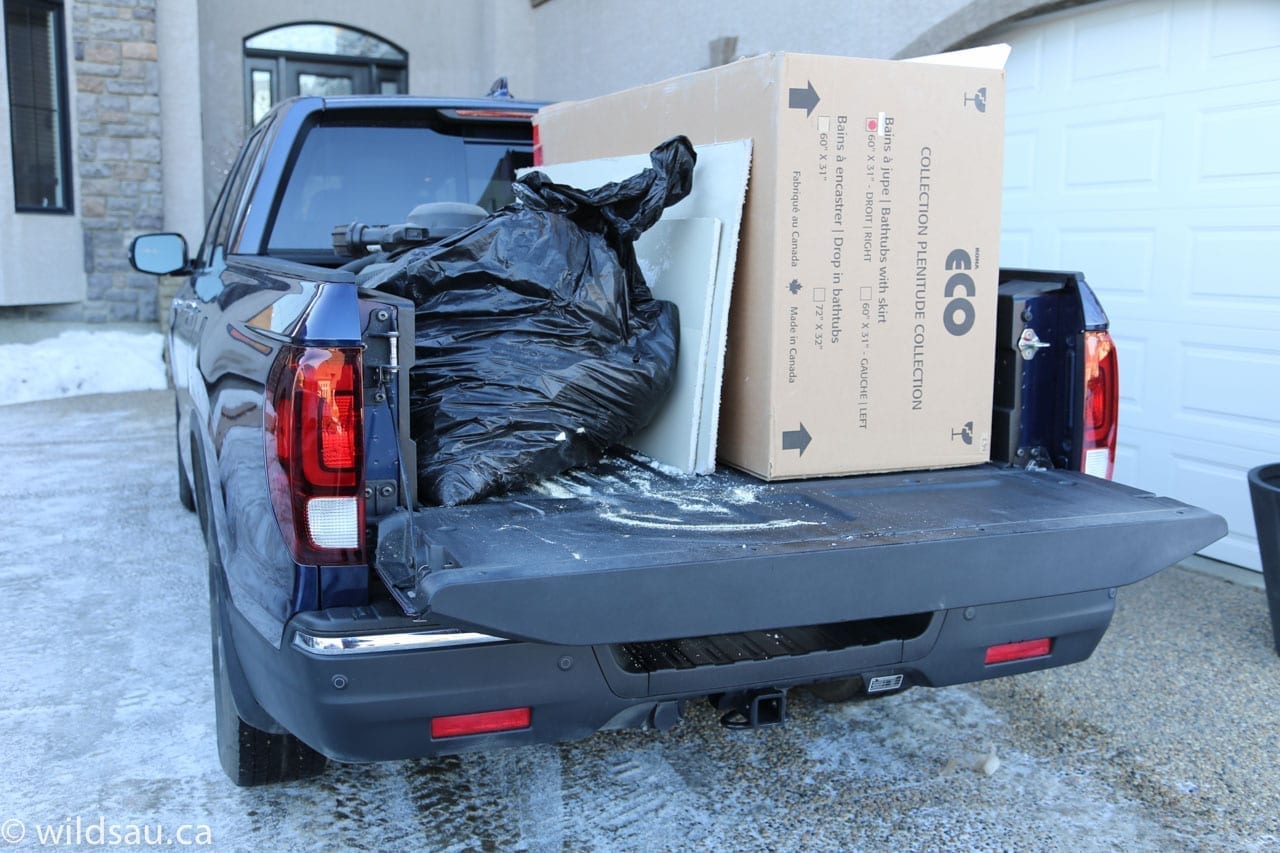
Nitpicks
I had a couple of nit-picky issues with the Ridgeline. The climate control fan is quite noisy at its upper speeds, so when it’s on automatic mode and trying to heat things up on a cold morning, you’ll have a great excuse to ignore your passenger. “What’s that, honey? Oh I’m sorry, I didn’t realize you were talking to me the whole way to work. I simply couldn’t hear you!” And the Ridgeline can proudly claim to have what must be the slowest power windows I have ever experienced. Period.
The Verdict
In the end, Honda has made big improvements outside and inside, and has built perhaps the easiest truck to live with, day in and day out. It’s highly capable and comfortable on the road, it offers up a ton of utility with its box and available cargo space in the rear seating compartment, and it’s throughly modern in every way. And there are very few compromises when you’re simply driving it from point A to point B.

WAF (Wife Acceptance Factor) was very high. My wife typically isn’t a big fan of trucks, but she liked how this one looks, how it drives and how it works. That’s high praise indeed coming from her.
If the Ridgeline does what you need from a truck, I wouldn’t hesitate to recommend it. If you need more towing capacity, a heavier-duty payload capacity, or perhaps some more off-road ability, you’ll need to look elsewhere. But I would venture to guess that many current or prospective truck owners will find everything they need right here in the 2017 Ridgeline. I’m one of them.

Disclosure: Vehicle was provided by Honda Canada.
If you enjoyed this review, feel free to check out my other vehicle reviews under the car reviews tab at the top of my blog.
